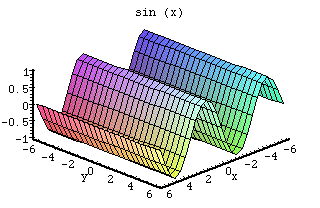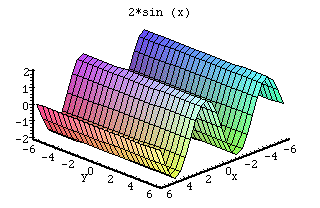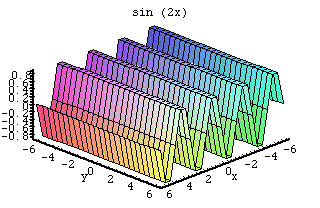Function
f(x,y) = p sin(qx)
Domain
x and y are elements of the set of all Real numbers
Graphs



Derivative
With respect to x: p cos(qx)q
With respect to y: 0Critical points are formed where the two derivatives equal 0. These critical points may be minimums, maximums, or saddle points. In the first graph, for x, 0 = cos(x) which happens at n*Pi/2, for all n. For y, 0 = 0 for all y values. From the graph, it shows that the lines for x = n*Pi/2 are the ridges that run high and low.
Integral
With respect to x: (-cos(qx)p)/q
With respect to y: p sin(qx)y
Interesting Features
When working with this function, there are many different items to look at. The p scales the values up and down. If it is left out, the graph goes from -1 to 1. The graph goes from -p to p. This is shown in the graph of 2 sin(x). The q value scales the angle. If it is left out, the values remain the same as the angle. This means that the graph completes one cycle in 2*Pi radians. The graph of sin (2x) shows this when the angles are doubled, the graph completes one cycle in only Pi radians.
Back to top
Back to main page